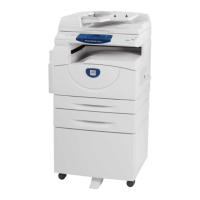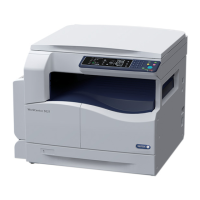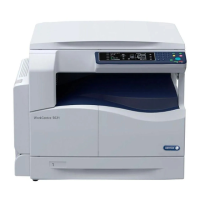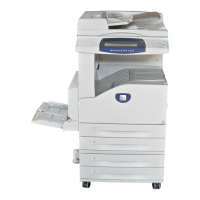06/2014
6-144
WC 5022/5024
6.8.5.4 V.8 Operation/Manual Send
Version 1.0
General
6.8.5.4 V.8 Operation/Manual Send
Below is the flow for Manual Send at the Sending Terminal.
Figure 1 j0mf2720
6.8.5.5 Troubleshooting of Super G3 Fax
As Super G3 Fax belongs to analog communication, its basic troubleshooting is the same as
G3 Fax. As differences exist due to the fast communication speed and the different communi-
cation procedure, troubleshooting unique in Super G3 mode will be described.
Super G3 Fax can communicate up to a maximum speed of 28800bit/s with V.34 modem. With
option, it can communicate up to 33600bit/s.
As the conventional communication speed is 14400bit/s (V.17), to achieve high speed commu-
nication by V.34, you have to perform data transmission of 2 times or above the conventional
speed at one time. Therefore, communication is affected by the quality of telephone line now
more than before. Even with telephone lines that can communicate without errors in 14400/
9600bit/s, communication errors may occur in Super G3.
Normal analog public lines have satisfactory frequency characteristics in 300-3400Hz zone.
Even if Super G3 communication sends or receives using the same remote party or telephone
line, the communication speed may differ. This is because the speed is decided based on the
line quality measured at the sending side using the Probing feature performed in V.34 proce-
dure, and when sending or receiving is done in Super G3, the result from Probing is changed.
That is, Super G3 mode cannot always communicate at the highest speed (33600bit/s).
Domestic Super G3 communication can achieve a speed of 21600bit/s and above in most
cases.
The conventional Fax at 14400bit/s or lower uses half-duplex communication which sends the
signal alternately whereas Super G3 Fax is performed using full-duplex communication which
has a different communication procedure. In full-duplex communication, Fax from both sides
will send signal concurrently and each side can monitor the signal of the remote party while
sending its own signal. Therefore, until now, the communication status can be verified by mon-
itoring the sound of the line but Super G3 communication is unable to judge by the monitor
sound. That is, when communication error occurs, protocol monitor analysis is required now
more than ever, and the frequency in which the Traces between the incoming and outgoing
stations are compared increases.
Super G3 Troubleshooting Precautions
ECM: ECM is required in Super G3 communication. Set the ECM feature to OFF and commu-
nicate via V.17/V.29(1400/9600bit/s) instead of V.34, even if Super G3 mode is available.
Communication Procedure: Super G3 communication procedure consists of V.8 and V.34 pro-
cedures. V.8 procedure will determine the verification of Super G3 mode and the communica-
tion speed. Once the V.8 procedure has completed, it will proceed to V.34 procedure and
transmit image information via V.34 procedure. V.34 procedure has the same command names
as G3 procedure (such as V.17/V.29) and most of their protocol traces are the same, but as it
uses full-duplex communication, its command transmission speed is 1200bit/s.

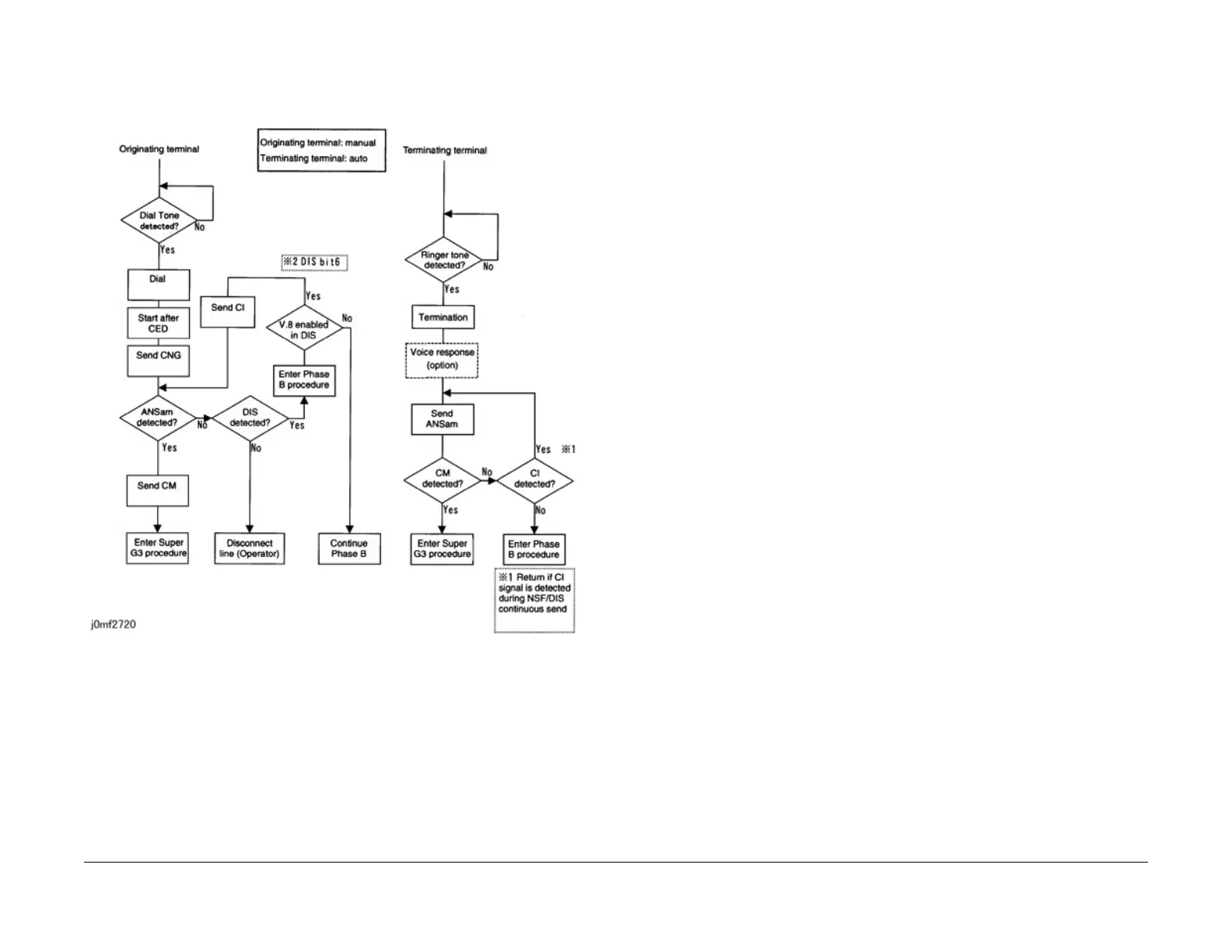